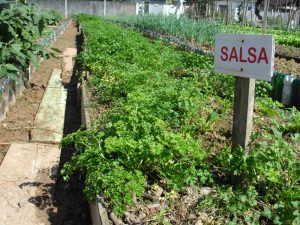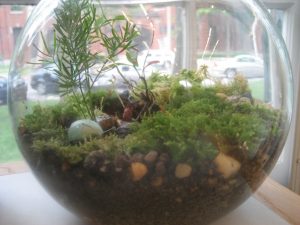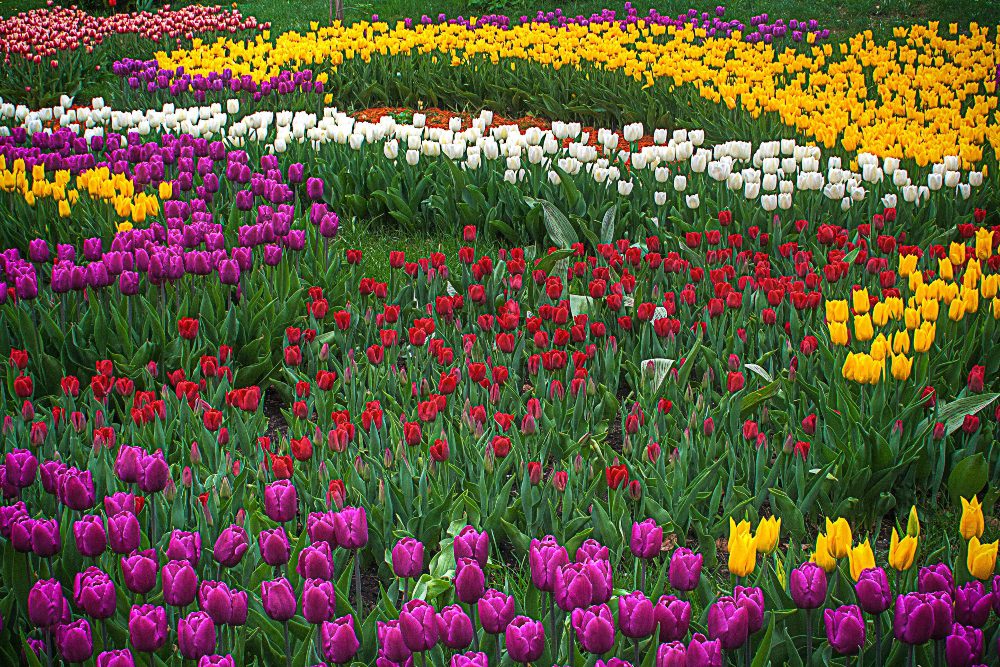
Creating a flower garden transforms outdoor spaces into vibrant havens. Whether you’re a novice or an experienced gardener, this guide provides insights and practical tips for establishing and maintaining a flourishing flower garden. We’ll explore the essentials of garden planning, plant selection, and care techniques, ensuring your garden is a colorful sanctuary throughout the seasons.
Planning Your Flower Garden
Contents
- 1 Planning Your Flower Garden
- 2 Maintaining Your Flower Garden
- 3 Expanding Your Flower Garden
- 4 FAQs About Growing a Flower Garden
- 4.1 How do I start a flower garden for beginners?
- 4.2 How often should I water my flower garden?
- 4.3 What are the best flowers to grow in a flower garden?
- 4.4 When is the best time to plant a flower garden?
- 4.5 How do I deal with pests in my flower garden?
- 4.6 Can I grow a flower garden in a small space?
- 4.7 How can I ensure my flower garden is eco-friendly?
- 4.8 What is deadheading, and why is it important?
- 4.9 How do I prepare my flower garden for winter?
- 4.10 Can I grow a flower garden organically?
- 5 Conclusion
Planning your flower garden is the first step to creating a breathtaking outdoor retreat. This phase is crucial as it lays the foundation for a successful and beautiful garden. It involves understanding your space, selecting a style that resonates with you, and preparing the soil for planting. A well-planned garden enhances your space’s beauty and ensures your plants’ health and longevity.
Assessing Your Space
Assessing your space is a vital step in planning your flower garden. It involves evaluating the physical attributes of your garden area. This assessment helps you understand the environmental factors influencing your garden’s success.
Understanding Sunlight Exposure
Sunlight is crucial for the health and growth of your flowers. Start by observing your garden at different times of the day. Note which areas receive full sun, partial sun, or full shade. Areas with full sun get at least six hours of direct sunlight daily, ideal for most flowering plants.
Partial sun areas receive about three to six hours of sun, suitable for some flowers that can tolerate a bit of shade. Full-shade areas are sunless most of the day and require shade-tolerant flowers. Understanding these patterns helps you select the right plants for each garden area.
Analyzing Soil Type and Quality
Soil quality significantly impacts plant health. Begin by testing your soil’s pH level and nutrient content. You can get a soil testing kit from a garden center. Most flowers thrive in slightly acidic to neutral soil (pH 6.0 to 7.0). The test also reveals nutrient deficiencies, which you can address with fertilizers.
Next, examine soil texture. Loamy soil, a mix of sand, silt, and clay, is ideal for flower gardens. It holds nutrients well and drains effectively. If your soil is too sandy or too clayey, improve it. Add organic matter like compost or peat moss to improve nutrient content and texture. Good soil ensures your flowers receive the proper nutrients, water, and air balance.
Evaluating Garden Size and Shape
The size and shape of your garden directly influence its design. Start by measuring the garden area. This helps estimate the number of plants needed and plan the layout. A larger area offers more flexibility for larger or multiple flower beds, while a smaller space might be best suited for compact, high-impact designs.
Consider the garden’s shape. A rectangular garden can have a classic, formal look, while an irregular shape might suit a more natural, free-flowing design. Vertical spaces, like walls or fences, can be used for climbing plants or hanging baskets, maximizing small areas.
Observing Wind and Environmental Conditions
Wind and other environmental factors significantly affect your garden’s health. Strong winds can damage delicate flowers and dry out the soil. Observe the wind patterns in your garden. If your area is particularly windy, consider planting wind-resistant flowers or creating windbreaks using fences or dense shrubs.
Pay attention to other environmental conditions like proximity to trees, which can lead to competition for nutrients and water. Also, consider the impact of your home, outbuildings, and hardscaping on water runoff and light reflection.
These elements can create microclimates that affect the temperature and moisture of your garden. By understanding these conditions, you can make informed choices about plant selection and garden layout.
Choosing a Theme or Style
Selecting a theme or style for your flower garden is an exciting process. It sets the tone and personality of your space. Here are some popular themes and styles you can consider:
Cottage Garden Style
The cottage garden style celebrates beauty in chaos, creating a sense of whimsy and nostalgia. It’s characterized by its informal, free-flowing design, densely planted with a mix of ornamental and edible plants. In a cottage garden, you’ll find a variety of flowers like roses, foxgloves, and delphiniums mingling with herbs and vegetable patches.
This style often incorporates traditional materials like wrought iron or weathered wood, adding to its rustic charm. The key is to aim for a natural, abundant look, with plants spilling over pathways and climbers adorning walls and fences. This style suits gardeners who enjoy a relaxed approach and a garden that changes with the seasons.
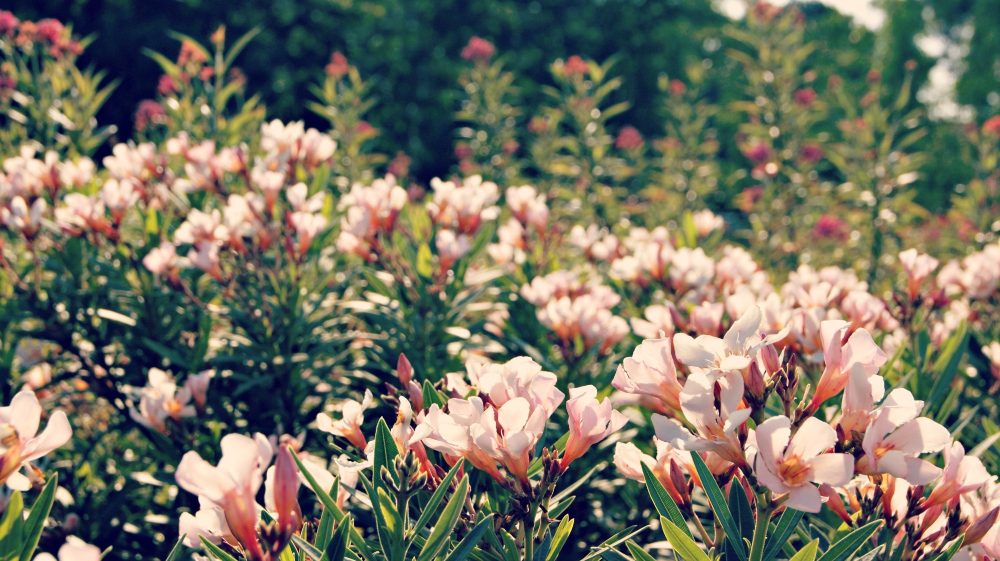
Formal Garden Style
In contrast, the formal garden style is all about order and symmetry. It draws inspiration from classical European garden designs, characterized by geometric layouts, straight lines, and well-defined spaces. Key elements include manicured lawns, neatly trimmed hedges, and orderly flower beds, often in a limited color palette for a cohesive look.
Architectural features like statues, fountains, or formal walkways are standard, adding to the garden’s elegance and structure. This style suits those who prefer a neat, controlled garden environment and are willing to invest time in regular maintenance to keep everything looking pristine. Formal gardens often create a sense of luxury and grandeur, making them ideal for more significant properties or those seeking to make a statement with their outdoor space.
Wildflower or Natural Garden Style
The Wildflower or Natural Garden Style is a tribute to the unstructured beauty of nature. This style focuses on creating a garden that feels like a natural habitat. It typically incorporates a variety of native plants, wildflowers, grasses, and perennials.
These gardens are designed to be low-maintenance and sustainable, often requiring less watering and care than traditional garden styles. They attract and support local wildlife, like birds and butterflies, adding to the ecological value of your space.
The key is to embrace the natural growth patterns of plants, allowing them to seed and spread in a controlled yet organic manner. This style is perfect for gardeners who want to create a wildlife-friendly environment and enjoy a more relaxed, natural-looking garden.
Modern or Contemporary Garden Style
The Modern or Contemporary Garden Style is defined by its clean lines, minimalistic design, and use of modern materials. This style often incorporates a limited plant palette, focusing on architectural plants that make a bold statement.
The use of space and negative space is essential, with each element carefully considered to create a balanced, harmonious look. Materials like concrete, steel, and glass are commonly used, often in combination with sleek, geometric shapes.
Water features, sculptures, and outdoor art can also play a significant role in these gardens. This style is ideal for urban environments or an extension of a modern architectural home. It appeals to those who appreciate a minimalist aesthetic and want a garden that reflects contemporary design trends.
Butterfly or Pollinator Garden
The Butterfly or Pollinator Garden is designed to attract and support a variety of pollinators, including butterflies, bees, hummingbirds, and other beneficial insects. This garden type focuses on planting nectar-rich flowers and host plants that cater to the lifecycle of these creatures. Popular choices include milkweed for monarch butterflies, lavender and salvia for bees, and trumpet vine for hummingbirds.
These gardens provide vital resources for pollinators and a vibrant display of color and activity. Incorporating a mix of perennials and annuals ensures a continuous bloom cycle, providing food sources throughout the growing season.
The layout can be informal or structured, but the emphasis is always on plant selection that benefits wildlife. This type of garden is ideal for eco-conscious gardeners who want to contribute to biodiversity and enjoy the beauty and vitality of nature’s pollinators.
Zen or Japanese Garden Style
The Zen or Japanese Garden Style is rooted in tradition, focusing on creating a space of tranquility and contemplation. These gardens are characterized by their minimalist approach, using a few elements to create a serene and harmonious environment. Key components include rocks, gravel, moss, and carefully pruned trees and shrubs, such as maples and pines.
Water features, like koi ponds or simple stone basins, often add a sense of calm and fluidity. The design is thoughtful and purposeful, with each element representing a larger natural landscape.
Paths and seating areas are integrated to encourage quiet reflection and connection with nature. This style is perfect for gardeners who seek a peaceful retreat and an opportunity to practice mindfulness in their outdoor space.
Soil Preparation and Improvement
Preparing and improving the soil is fundamental to creating a successful flower garden. Healthy soil leads to healthy plants. Here’s how to ensure your soil is ready to support a thriving garden.
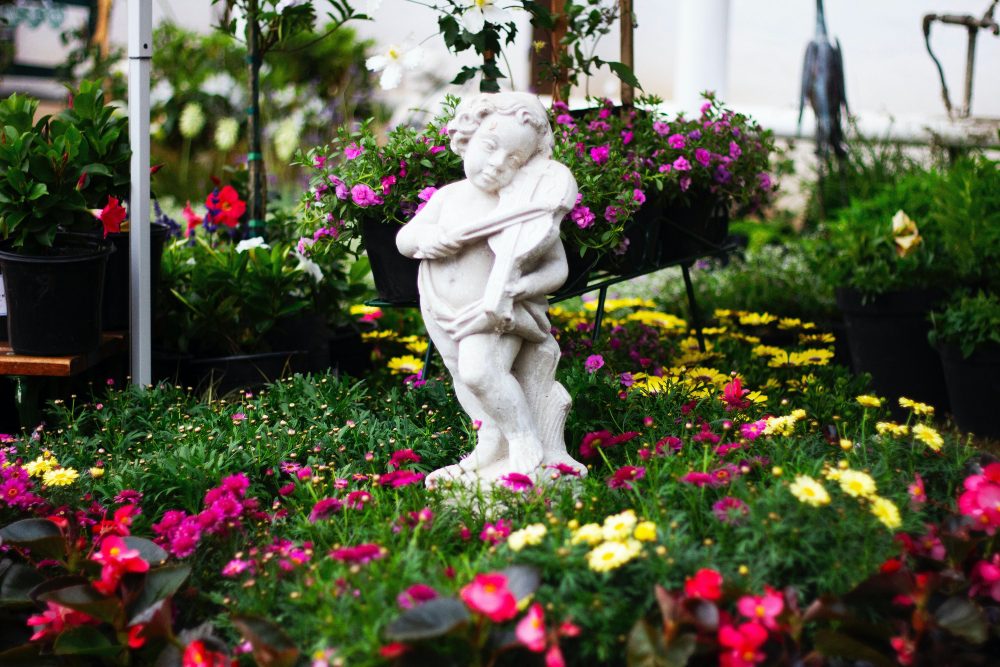
Testing Soil Composition and pH
Testing the soil composition and pH is a crucial first step in preparing your garden. This process helps determine the soil’s acidity or alkalinity, affecting plant nutrient availability.
- Conducting a Soil Test: You can get a soil testing kit from a garden center or seek services from a local extension office. The test will reveal the pH level and key nutrient concentrations.
- Interpreting Test Results: Most flowers thrive in a slightly acidic to neutral soil (pH 6.0 to 7.0). The test results will guide you on whether you need to adjust the soil pH.
- Adjusting Soil pH: Add lime to raise the pH if your soil is too acidic. If it’s too alkaline, sulfur or peat moss can help lower the pH.
- Replenishing Nutrients: Based on the nutrient profile, add the necessary fertilizers or amendments to balance the soil for optimal plant growth.
Enhancing Soil Texture and Drainage
Soil texture and drainage are vital to ensuring that water and nutrients are adequately available to your plants.
- Assessing Soil Type: Determine if your soil is sandy, loamy, or clayey. Sandy soil drains quickly but doesn’t hold nutrients well, while clay soil has nutrients but may not drain effectively.
- Improving Sandy Soil: Incorporate organic matter like compost or well-rotted manure for sandy soils. This enhances nutrient retention and water-holding capacity.
- Amending Clay Soil: Mix coarse sand and organic matter to improve drainage and aeration if you have clay soil.
- Creating Ideal Loam: The goal is to achieve loamy soil, the ideal mix of sand, silt, and clay. Loam retains moisture and nutrients effectively while draining well.
- Regular Maintenance: Adding organic matter annually helps maintain soil health and texture.
Organic Matter and Composting
Incorporating organic matter and composting is essential for building fertile, healthy soil in your flower garden.
- Benefits of Organic Matter: Adding organic matter improves soil structure, enhances nutrient content, and boosts moisture retention. It also promotes beneficial microbial activity.
- Creating Compost: Start a compost pile with kitchen scraps, yard waste, and other organic materials. Over time, these materials decompose into rich compost.
- Application Techniques: Spread compost over your garden beds and gently mix it into the top layer of soil. Doing this annually enriches the soil and prepares it for new plantings.
- Maintaining Soil Health: Regularly adding organic matter helps maintain soil fertility and structure, ensuring your flower garden remains productive and healthy.
Fertilizing for Optimal Growth
Fertilizing is key to providing your flowers with the nutrients they need for growth, blooming, and overall health.
- Understanding Fertilizer Needs: Different plants have varying nutrient requirements. Conduct a soil test to determine what your garden lacks.
- Choosing the Right Fertilizer: Select a balanced fertilizer suitable for flowering plants. Consider slow-release formulas for prolonged nutrient availability.
- Application Timing and Techniques: Apply fertilizers according to the package instructions, usually in early spring and periodically through the growing season.
- Monitoring Plant Health: Watch for signs of nutrient deficiencies or excesses. Yellowing leaves or stunted growth can indicate nutrient problems.
- Eco-Friendly Options: Consider organic fertilizers like fish emulsion or bone meal, which are gentler on the environment and beneficial for soil health.
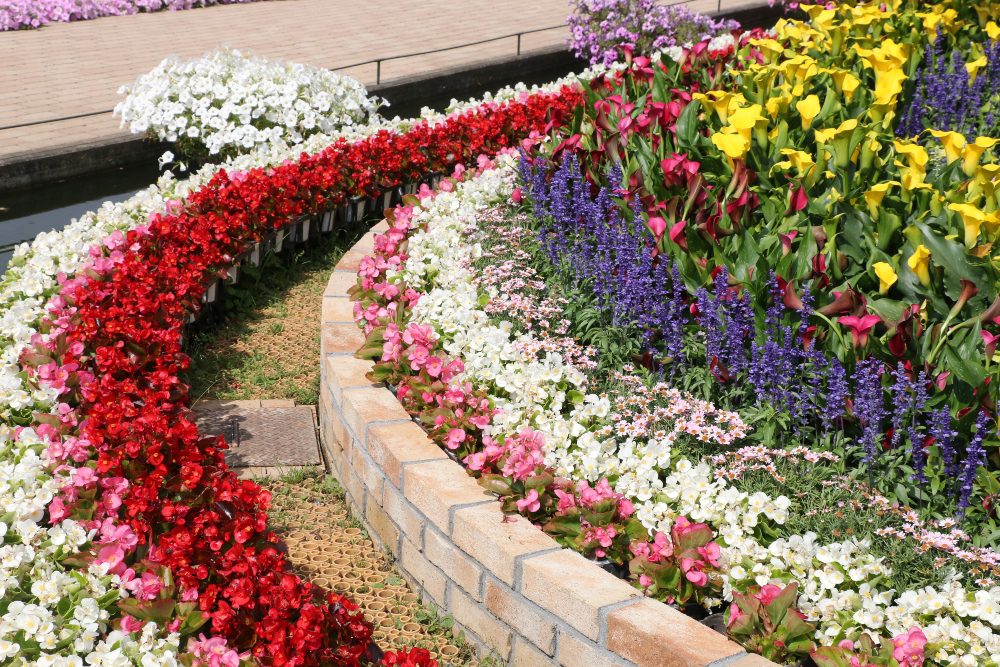
Designing for Visual Impact
Creating a visually impactful flower garden involves thoughtful design and strategic plant placement. Here’s how to achieve a garden that captivates and delights.
Focus on Color Scheme
Choosing the right color scheme is crucial for creating a visually appealing garden. Colors can set the mood and tone of your space.
- Harmonious Colors: A harmonious color scheme uses colors close to each other on the color wheel, like shades of pink and purple. This creates a soothing and cohesive look.
- Contrasting Colors: Using contrasting colors like yellow and purple for a more dynamic garden. This creates a bold, eye-catching effect that stands out.
- Seasonal Considerations: Think about how colors will change through the seasons. Some plants may have different colored foliage or blooms at different times of the year.
- Personal Preference: Your color choices should reflect your style. Whether you prefer soft pastels or vibrant tones, your garden reflects you.
Play with Heights and Textures
Varying plant heights and textures add depth and interest to your flower garden.
- Layering Plants: Arrange plants so that taller ones are at the back of beds or borders, with medium and shorter plants in front. This creates a tiered effect, ensuring all plants are visible.
- Tall Plants: Use tall plants, like sunflowers or delphiniums, as backdrops or to create vertical interest. They draw the eye upward and add structure.
- Ground Covers and Borders: Shorter plants and ground covers are excellent for edging and filling in the front of beds. They can soften hard lines and lead the eye through the garden.
- Texture Variety: Mix plants with different textures. Broader, glossy leaves can complement fine, feathery foliage. Textural contrast makes the garden more engaging and tactile.
- Balancing Elements: Ensure there’s a good balance between different plant forms. Too much of one height or texture can make the garden feel monotonous.
Consider Bloom Times
Planning for continuous color throughout the growing season is key to a flower garden that always looks vibrant and alive.
- Research Plant Bloom Times: When selecting plants, research their bloom times. Some plants flower in spring, others in summer or fall. By choosing a variety, you’ll have continuous blooms.
- Succession Planting: This technique involves planting flowers that bloom at different times in the same space. As one plant’s blooming period ends, another begins.
- Year-Round Interest: Don’t forget about non-flowering plants. Foliage plants, evergreens, and ornamental grasses provide color and texture even when flowers aren’t blooming.
- Record Keeping: Keep a garden journal. Note when each plant blooms and for how long. This helps in planning and adjusting for subsequent years.
Use of Focal Points
Focal points in a flower garden draw the eye and add interest, creating a journey through the space.
- Strategic Placement: Place focal points where they naturally draw the eye, like at the end of a path or in the center of a circular bed. They should integrate into the flow of the garden.
- Choose Standout Features: A focal point can be a vibrant plant, a group of plants, a sculpture, a water feature, or a piece of garden art. The key is that it stands out from its surroundings.
- Complementing the Garden Style: The focal point should match the overall style of the garden. In a formal garden, a statue might be appropriate; in a natural flower garden, a large, unique rock could serve.
- Creating Multiple Points of Interest: In larger flower gardens, having several focal points encourages exploration and movement throughout the space.
- Highlight with Planting: Surround your focal point with planting that complements but doesn’t overshadow it. For instance, low-growing flowers around a sculpture or tall, dramatic plants behind a bench.
Planting Techniques for Healthy Growth
Proper planting techniques are vital for the health and growth of your flower garden. Here’s how to ensure your plants get the best start and continue to thrive.
Digging the Right Size Hole
- Width and Depth: The hole should be twice the width of the plant’s root ball and just as deep. This size ensures enough room for the roots to spread without stress.
- Loosening the Soil: Before placing the plant, loosen the soil at the bottom and sides of the hole. This helps roots extend more easily into the surrounding soil.

Positioning the Plant
- Correct Depth: Ensure the plant is placed at the same depth it grew in its container. The top of the root ball should be level with the surrounding ground.
- Orientation: Consider the plant’s best side and position it facing the desired direction, especially if it will be viewed predominantly from one angle.
Backfilling
- Gentle Process: Carefully backfill the hole with soil, lightly packing it around the root ball. Avoid compacting the soil too much, as this can hinder root growth.
- Removing Air Pockets: As you backfill, pause to gently tap the soil down or water lightly to settle the soil and remove air pockets. Air pockets can cause roots to dry out.
Watering
- Initial Watering: After planting, water the plant thoroughly. This helps settle the soil around the roots and ensures good contact between roots and soil.
- Avoiding Water Stress: Pay close attention to watering in the first few weeks. New plants are especially vulnerable to water stress as they establish.
Maintaining Your Flower Garden
Regular maintenance ensures your flower garden remains healthy and beautiful throughout the seasons. Here’s how to keep your flower garden thriving.
Watering Your Flower Garden
Watering is crucial for a healthy flower garden. Establish a consistent schedule, preferably early morning, to reduce evaporation and prevent fungal diseases. Emphasize deep watering to encourage deeper root growth, which strengthens your plants. This approach ensures your flower garden’s roots are well-hydrated and better equipped to withstand dry conditions.
Feeding Your Flower Garden
A well-fed flower garden is a thriving one. Utilize a balanced fertilizer to provide essential nutrients. Adhering to recommended application rates ensures your plants receive the right amount of nourishment without overfeeding. Organic fertilizers are a great option, releasing nutrients slowly and enhancing soil health over time, benefiting your flower garden in the long run.
Pruning and Deadheading in Your Flower Garden
Regular pruning and deadheading are key practices for maintaining your flower garden. Pruning not only shapes your plants but also promotes healthy growth and prevents disease by improving air circulation. Deadheading, or removing spent blooms, encourages flowering and keeps your garden tidy and vibrant.
Weed Management in Your Flower Garden
Effective weed management is essential. Weeds compete with your flowers for essential resources, so regular weeding is necessary. Mulching is a dual-purpose solution; it suppresses weed growth and helps retain moisture, contributing to the overall health of your flower garden.
Pest and Disease Control in Your Flower Garden
Keep a vigilant eye on your flower garden for signs of pests or diseases. Early detection is crucial for effective control. Opt for organic or environmentally friendly solutions to tackle these issues, ensuring your garden stays healthy and sustainable.
Seasonal Care for Your Flower Garden
Your flower garden needs different care in each season. Spring is for cleaning and preparation, summer focuses on maintenance like watering and deadheading, and fall involves cleanup and preparation for the colder months. In winter, protect sensitive plants to ensure they survive and thrive in the upcoming season.
Regularly maintaining your flower garden enhances its beauty and ensures its longevity and health, providing a delightful outdoor space for you to enjoy year-round.
Expanding Your Flower Garden
Expanding your flower garden is an exciting way to add diversity and new interest. Introduce new plant varieties that complement your existing garden. This not only adds visual appeal but also can improve the ecological balance.
Experiment with different textures, heights, and colors. Research new plants to ensure they suit your garden’s conditions and won’t adversely affect existing plants.
Incorporating Companion Plants
Companion planting is a great strategy for expansion. It involves planting species together that benefit each other, whether through pest control, nutrient improvement, or simply aesthetic harmony. For example, marigolds can deter pests from other plants. Companion planting makes your flower garden more diverse, resilient, and healthy.
Techniques for Propagating and Expanding
Learn propagation techniques like division, cuttings, or seeding to expand your garden. Dividing perennials can rejuvenate them and provide new plants for your garden. Taking cuttings or collecting seeds from your plants is both cost-effective and rewarding. This approach allows you to expand your flower garden while maintaining its health and harmony.
FAQs About Growing a Flower Garden
How do I start a flower garden for beginners?
Start by choosing a suitable location with adequate sunlight. Test your soil to understand its type and what improvements it may need. Begin with easy-to-grow plants and gradually expand as you gain confidence.
How often should I water my flower garden?
Watering depends on the weather and soil type. Generally, an inch of water per week, either from rainfall or manual watering, is sufficient. Watering deeply and less frequently is better to encourage strong root growth.
What are the best flowers to grow in a flower garden?
The best flowers depend on your climate and soil conditions. Some easy and popular choices include marigolds, sunflowers, daisies, and petunias. Always consider local climate and soil when choosing plants.
When is the best time to plant a flower garden?
The best planting time varies by region and the specific plants you’re using. Generally, spring is a good time for most regions. Frost-sensitive plants should be planted after the last expected frost date.
How do I deal with pests in my flower garden?
Regularly inspect your plants for signs of pests. Use organic pest control methods like neem oil or insecticidal soap. Encouraging beneficial insects like ladybugs can also help control pests naturally.
Can I grow a flower garden in a small space?
Even with limited space, you can grow a vibrant flower garden. Use containers, hanging baskets, or vertical gardens. Choose compact or dwarf plant varieties suited for small spaces.
How can I ensure my flower garden is eco-friendly?
Use organic fertilizers and pest control methods. Plant native species to support local ecosystems. Practice water conservation techniques like mulching and using rain barrels.
What is deadheading, and why is it important?
Deadheading involves removing spent flowers from plants. It encourages more blooms, extends the flowering period, and keeps your garden looking neat.
How do I prepare my flower garden for winter?
As the cooler months approach, it’s time to tuck your flower garden in for its winter slumber. Start by gently removing dead or dying plants, which tidies up your space and prevents disease.
Can I grow a flower garden organically?
Use compost you’ve made from kitchen scraps and yard waste – it’s like a home-cooked meal for your plants. Natural fertilizers and pest control methods keep everything in balance, just as Mother Nature intended.
Conclusion
Growing a flower garden is like painting a living canvas that changes with the seasons. It’s a personal retreat that grows from your care and dedication. Each seed you plant and flower that blooms tell a story of your connection to the earth. As you tend to your garden, you’re just cultivating plants, creating a vibrant tapestry of life in your backyard.


